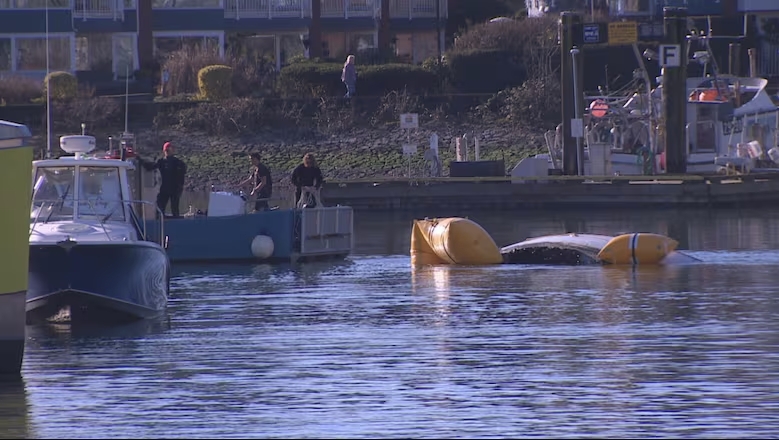Abandoned Boats in False Creek Pose Growing Environmental and Safety Concerns
Subhadarshi Tripathy
1/27/20252 min read


False Creek, a picturesque waterway in the heart of Vancouver, is facing a growing issue with abandoned and derelict boats, creating environmental hazards and frustrating residents. Local salvage operators and advocates are calling for more accountability and better enforcement to address the problem.
Stephen Paetkau, owner of Skookum Yacht Service in Vancouver, says removing abandoned boats has become an increasingly frequent task for his team. Since March 2021, his crew has salvaged 79 vessels from False Creek and Granville Island, with the latest operation involving a damaged sailboat stuck under a ramp at Vanier Park.
"This is a lot for the False Creek Basin," Paetkau said. His team spent hours extracting the boat, which had a large hole where the keel once was and a bent rudder.
Environmental and Social Impacts
Derelict boats can release engine oil, antifreeze, and other toxic substances into the water, endangering marine ecosystems. Zaida Schneider, president of the False Creek Friends society, called the situation “a terrible mess” and highlighted the damage these vessels can cause to sensitive coastal habitats.
The issue is partly driven by the high costs of boat ownership, Paetkau explained. Some owners find themselves unable to maintain their vessels, ultimately abandoning them. While Canada’s Wrecked, Abandoned and Hazardous Vessels Act imposes penalties of up to $50,000, enforcement has been limited—only four fines have been issued since the law’s introduction nearly six years ago.
Life Afloat
For some, living on a boat in False Creek is a way to cope with Vancouver’s high cost of living. Griffin Shields, who has been living aboard a boat for eight years, says while he enjoys the lifestyle, others struggle to adapt.
"There are people here for whom it’s just a step above living in a tent," Shields said, noting some boats lack heat or cooking facilities.
Shields alternates between False Creek and West Vancouver to avoid the need for a free anchoring permit, which allows a maximum of 14 days in 30 during peak season. However, enforcement of the permit system is rare, with estimates suggesting fewer than 10% of boats in False Creek comply.
Jurisdictional Challenges
The lack of a centralized authority for False Creek adds complexity to the issue. Responsibility for the waterway is shared among multiple agencies, including the Vancouver Police Department (VPD), the Vancouver Board of Parks and Recreation, Transport Canada, and the Canadian Coast Guard.
"There are more than a dozen agencies with one responsibility or another, but there’s no single coordinating body," Schneider said. This issue has persisted for decades, with inquiries into the lack of oversight dating back to 1929.
Sgt. Steve Addison of the VPD’s marine unit acknowledges the challenges posed by overstaying vessels, many of which are not seaworthy. "They’re not only an eyesore but also pose significant pollution risks," Addison said.
He countered the notion of poor coordination among agencies, stating, "We have multiple agencies, but we’re working closely together to address the problem."
The Work Continues
For salvage operators like Paetkau, the process of removing abandoned boats remains labor-intensive. Once a vessel is extracted, recyclable materials like metals are salvaged, while the remaining parts are crushed and sent to landfills.
“It’s a time-consuming process, but it’s necessary,” he said.
As the number of abandoned boats continues to rise, residents and advocates are calling for stronger enforcement and clearer jurisdictional authority to protect False Creek’s environment and community.
News
Stay updated with the latest BC news stories, subscribe to our newsletter today.
SUBSCRIBE
© 2025 Innovatory Labs Inc.. All rights reserved.
LINKS
